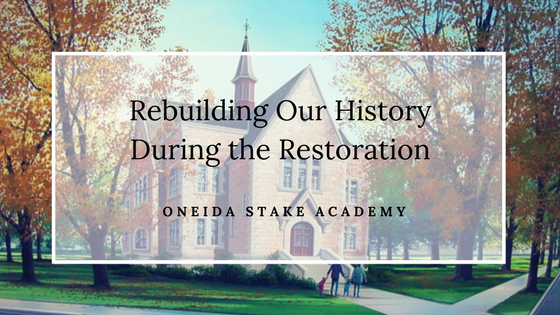
Rebuilding Our History During the Restoration
In the midst of the restoration efforts at the Oneida Stake Academy (OSA) Cultural Center, we have been fortunate to uncover various nuggets of our past. During this past year, we’ve met with Mormon pioneer and Native American historians to learn new stories of our roots as an academy and the LDS Church’s influence on Western American history. Here’s a quick glimpse into those discoveries.
Mormon Pioneers in the West
The OSA building truly exemplifies the can-do attitude of the pioneers. Without many possessions or financial resources, they created this beautiful building and the community surrounding it with their God-given talents and willingness to work together. The academies are examples of a rich history that nourished leaders, such as Harold B. Lee, Ezra Taft Benson, Samuel Cowley, and E.G. Petersen, all of whom are OSA alma mater and accomplished Mormons.
Native American History in the Church
At the restored OSA, we plan to tell the story of the relationship between the pioneers and the indigenous Native Americans, the Northwestern Band of the Shoshone Nation. Last summer, Darren Parry, Chairman of the NW Band of the Shoshone Nation, spoke to a standing-room-only audience in the OSA about the conflict of the Bear River Massacre of 1863, an event that nearly wiped out the tribe’s entire population. Years after the massacre, the Northwestern Shoshone appealed to Mormon leader Brigham Young, and that relationship was the beginning of the friendship between the Mormon Pioneers and the Native Americans. As a result, 600 members of the Northwestern Band of the Shoshone nation joined the LDS church in 1875.
The Edmunds-Tucker Act
In 1887, Congress passed the Edmunds-Tucker Act in response to the Church’s policy of polygamy. The Act abolished the office of territorial superintendent of district schools, and in response, the LDS Church built their own academies, including the OSA. These academies became the building blocks of many well-known universities in Utah and Idaho, including BYU Provo, BYU-I, University of Utah and Weber State. Today, the OSA is the only building undergoing restoration with the intent to commemorate and share the Church’s value of education throughout its history.